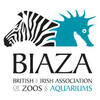Shaun Foggett, Founder and Director of Crocodiles of the World, and IUCN SSC Crocodile Specialist Group (CSG) member, shares insights from his recent crocodile conservation trip to West Africa:
I have recently returned from The Gambia, where I was part of a conservation team conducting official crocodile population surveys, funded by the Crocodiles of the World Foundation.
The Gambia is home to three crocodile species: Critically Endangered West African slender-snouted crocodile (Mecistops cataphractus), West African crocodile (Crocodylus suchus) and Vulnerable West African dwarf crocodile (Osteolaemus afzelii).
Working alongside Dr. Matt Shirley, Director of Project Mecistops, and Caitlin Henderson, Programme Coordinator of Project Wild Gambia, we surveyed the banks and waters of the river Gambia. The last surveys of this kind were conducted in 2008/09, when a small population of West African slender-snouted crocodiles was found in a 1km stretch of the river. This was the species we were most hopeful to locate, and I’m happy to report that we successfully found several young slender-snouted crocodiles of various sizes, with the largest measuring 8 feet and the smallest estimated to be around one year old. While this is encouraging, the species is hanging by a thread, with only an estimated 500 adults remaining across its entire range in West Africa. We also gathered data on West African crocodiles, though unfortunately, we were unable to locate any West African dwarf crocodiles, which is concerning.
The best time to survey crocodiles is at night and from a boat which certainly presents several challenges! We used high-powered spotlights to detect their eye shine from the boat and once spotted, we’d attempt to catch the crocodile to identify the species and collect data such as its sex, measurements, and GPS coordinates. During the day, we’d be out on the boat or would trek through the jungle looking for potential habitats and planning where to focus our efforts. This trip also presented an opportunity to collect environmental data such as day and night air temperatures and UV light levels and water temperatures which is vital to the care of our own animals here at Crocodiles of the World.
After spotlighting for several hours in the dark your eyes can start playing tricks and the shoreline can creep up on you very quickly. While spotlighting you are also responsible for navigating the person steering the boat – its pitch black and they are reliant on you giving direction. It’s mentally exhausting, but when we spotted an eye shine, all the effort paid off.
The data we collected at night was mostly from juvenile crocodiles, although we did observe large adult West African crocodiles during the day. These adults were very cautious, quickly retreating into the river from the bank as we got nearer. Both species are known to be shy, but these were noticeably wary of humans.
The main purpose of the surveys was to find out if the three crocodile species still exist in the Gambia, and if so to ascertain population health status, then compile a report for the Department of Parks and Wildlife Management on our findings. This report will also include some recommendations on ways which these animals can be further protected such as assigning rangers to monitor the areas for illegal fishing boats, removing illegal fishing traps and implementing community engagement programs. Moving forward we plan to conduct further surveys and focus more effort into finding the West African Dwarf crocodile species and make sure it still exists in the Gambia.
It was truly incredible to see these crocodile species in the wild. Despite the many challenges they face, I remain optimistic about the positive impact the conservation team can make. The trip was a timely reminder about why I opened Crocodiles of the World exactly 14 years ago: to share my passion for crocodiles and contribute to their conservation. The zoo is home to 20 species of crocodilians, including the West African slender-snouted crocodile, West African crocodile, and West African dwarf crocodile, putting us in a unique position to continue studying their behaviour and deepening our understanding of these species here in the UK. As a registered charity, The Crocodiles of the World Foundation was created to drive our conservation efforts, and I’m hopeful that it will play an active role in future projects in The Gambia.
It is now the rainy season in West Africa, which will make surveying much more difficult, so I plan to return to The Gambia later this year, where I hope we will find West African dwarf crocodiles and make further progress in ensuring the future of all three species.
- Shaun Foggett, Crocodiles of the World
All blogs reflect the views of their author and are not necessarily a reflection of BIAZA's positions
Related Members
-
News
.png?w=100&h=100&zc=1&f=jpeg&hash=b1cc5e6f661f29a8056e3e9e12ce7ed0) Chester Zoo has joined two other major zoos to found and forge a pioneering cryopreservation conservation partnership. 4th November, 2025In a bold step for global wildlife conservation, Toronto Zoo (Canada), Chester Zoo (United Kingdom) and Dublin Zoo (Ireland) announced a strategic partnership…
Chester Zoo has joined two other major zoos to found and forge a pioneering cryopreservation conservation partnership. 4th November, 2025In a bold step for global wildlife conservation, Toronto Zoo (Canada), Chester Zoo (United Kingdom) and Dublin Zoo (Ireland) announced a strategic partnership… -
News
.png?w=100&h=100&zc=1&f=jpeg&hash=2930403a7651bc8b58844367a4c20cc1) Award winning rainforest garden from Chelsea Flower Show takes root at Bristol Zoo Project 30th October, 2025An award-winning rainforest garden has officially opened to the public at Bristol Zoo Project, bringing rainforest landscapes to the Bristol area for…
Award winning rainforest garden from Chelsea Flower Show takes root at Bristol Zoo Project 30th October, 2025An award-winning rainforest garden has officially opened to the public at Bristol Zoo Project, bringing rainforest landscapes to the Bristol area for… -
News
.png?w=100&h=100&zc=1&f=jpeg&hash=2f1f9576a7b9adc8159cf7bc58b18ba6) The Great British Wildlife Restoration 2026 - the shortlist! 27th October, 2025Twenty-six zoos and aquariums have been shortlisted for the Great British Wildlife Restoration competition, a prestigious scheme that recognises the incredible…
The Great British Wildlife Restoration 2026 - the shortlist! 27th October, 2025Twenty-six zoos and aquariums have been shortlisted for the Great British Wildlife Restoration competition, a prestigious scheme that recognises the incredible…

.png?w=100&h=50&zc=1&f=jpeg&hash=229bf94e9f4589d9702a9326e6b6a58a)

